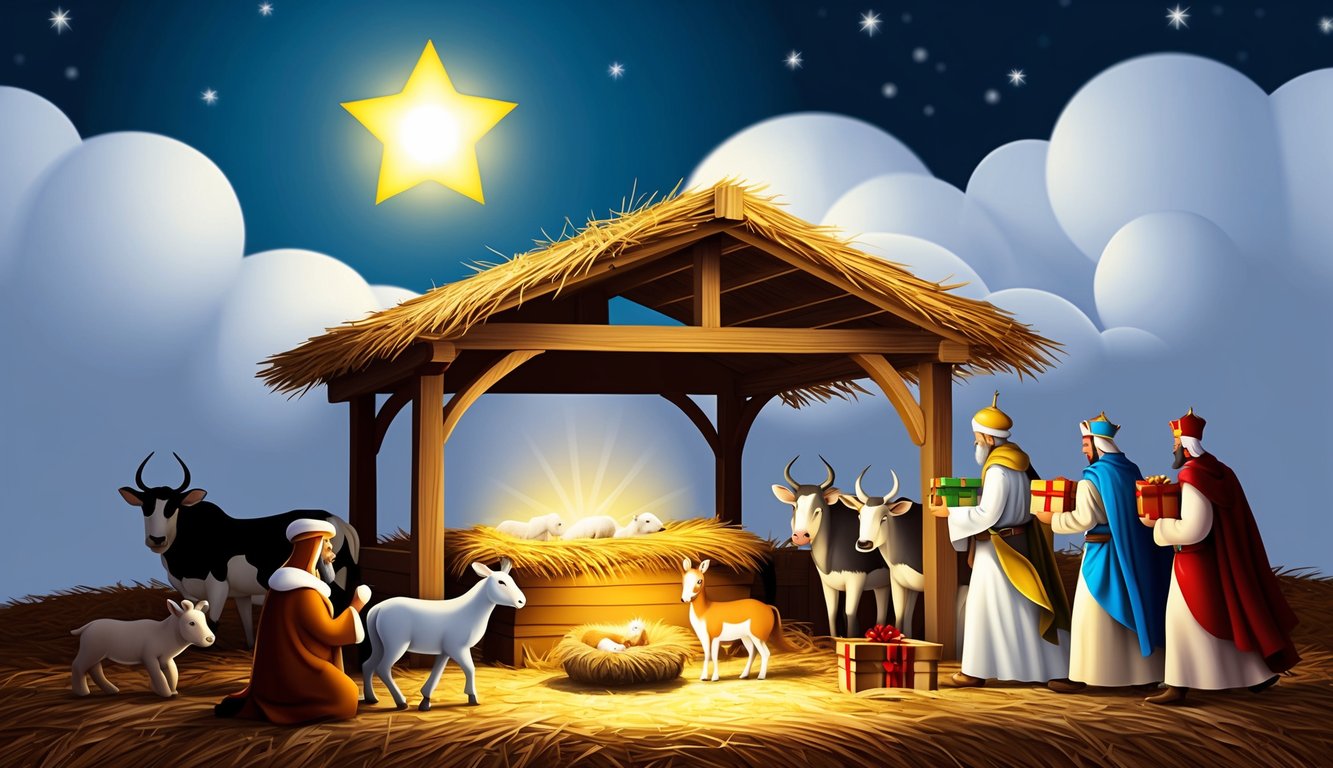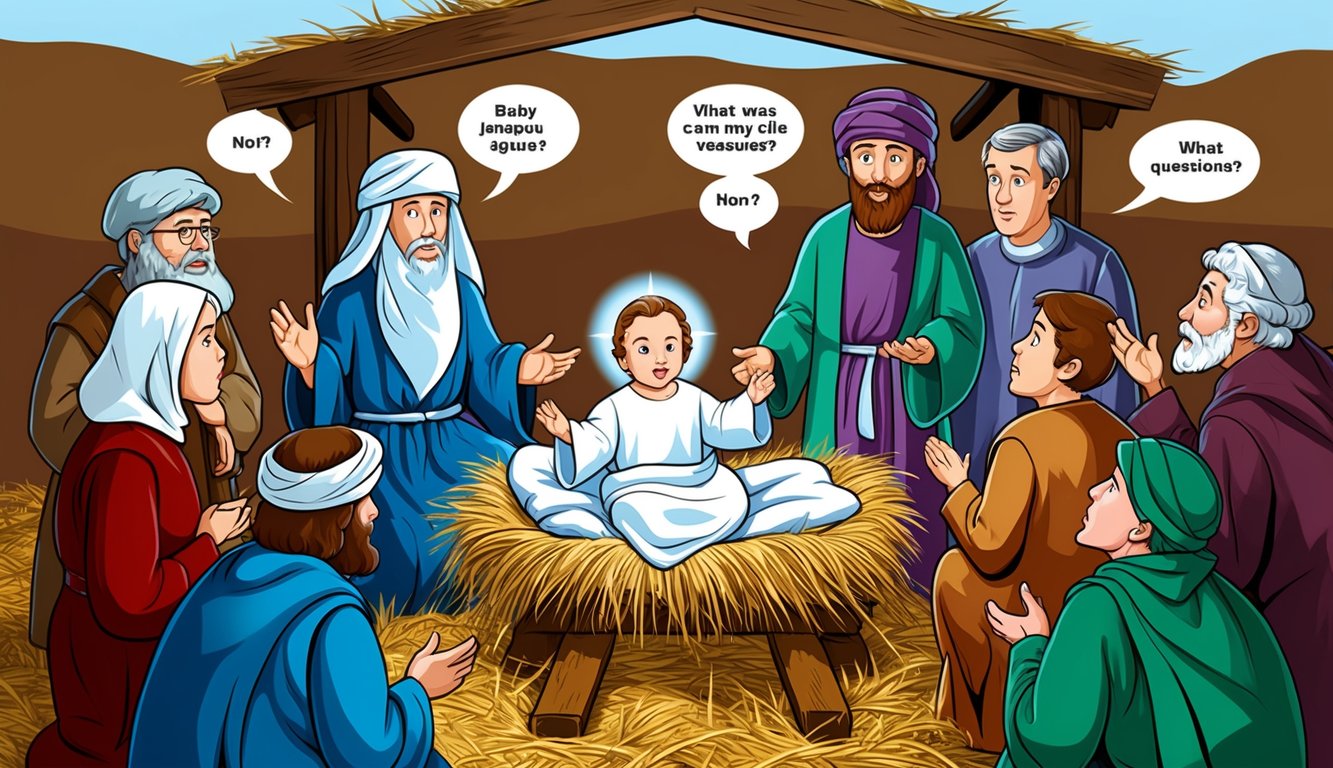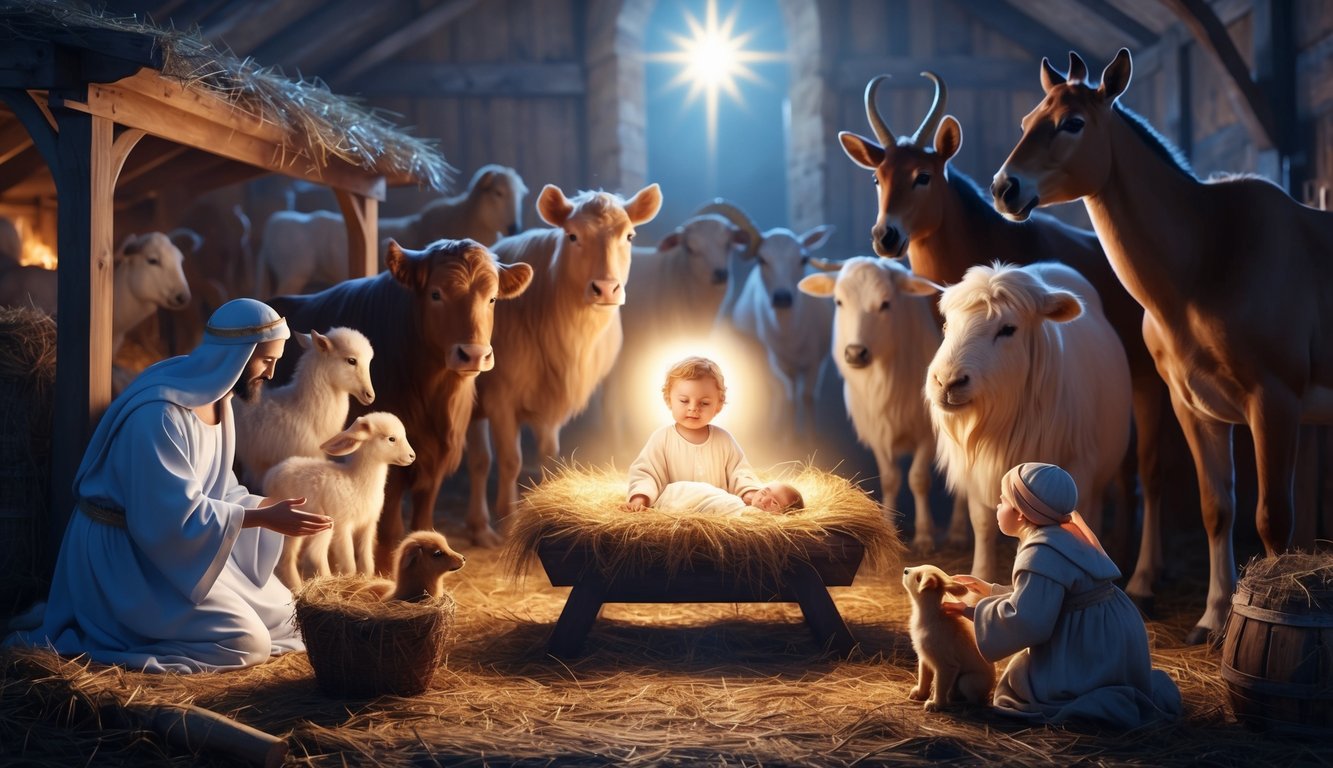Don’t Miss Out On This Unique Astrological Opportunity
Are you tired of spinning your wheels and getting nowhere? Simply put, you’re out of sync: you’re out of alignment with your astral configuration.
But: there’s a kind of map that can help you reclaim your alignment. Think of it as your own personal blueprint to success and happiness: a blueprint that will help you live your most amazing life.
Get started here.
The story of baby Jesus in the manger is one that captures the hearts of many around the world.
It reflects humility and simplicity as key aspects of the birth of Jesus Christ.
This moment, symbolized by the manger, showcases the humble beginnings of someone who would have a profound impact on history and religion.
Exploring the manger’s significance, you can see it as more than just a backdrop.
It represents a deeper message of hope and salvation to millions of Christians.
For believers, Jesus’s birth in a humble setting underscores his connection to all people, regardless of status or wealth.
The story of the manger also plays a central role in many cultural and religious celebrations during Christmas.
It serves as a powerful reminder of the themes of love and giving.
Key Takeaways
- The manger highlights Jesus’s humble beginnings.
- It symbolizes hope and salvation in Christianity.
- Celebrations of Jesus’s birth reflect themes of love and giving.
The Historical Context of Jesus’ Birth

Understanding the birth of Jesus involves exploring the Gospel of Luke, the significance of Bethlehem, and the political climate under Caesar Augustus.
Each aspect sheds light on the story’s historical backdrop.
Mary and Joseph’s journey to Bethlehem, prompted by a census ordered by Caesar Augustus, fulfilled the prophecy that the Messiah would be born in David’s city.
The humble setting of Jesus’ birth in a manger highlights themes of humility and divine purpose, which would later shape early Christianity facts and beliefs.
Understanding these details provides deeper insight into the historical and spiritual foundations of Jesus’ life and message.
The Nativity Story According to Luke
In the Gospel of Luke, the nativity story is detailed with clarity.
Mary and Joseph travel to Bethlehem for a census, an event that sets the stage for Jesus’ birth.
While there, they find no room at the inn, leading to Jesus’ birth in a stable.
This imagery is iconic, highlighting humble beginnings.
An angel of the Lord appears to shepherds nearby, announcing the birth.
The shepherds then visit the stable, finding Mary, Joseph, and the baby Jesus.
Luke’s account emphasizes the ordinary surroundings of what Christians consider a miraculous event, underscoring themes of humility and grace.
Bethlehem: The City of David
Bethlehem, the City of David, holds great significance in the story.
It is prophesied as the birthplace of the Messiah, making Jesus’ birth there fulfilling ancient expectations.
The town, located in Judea, is linked to King David, who was also born there.
Bethlehem was a bustling place during the time of the census.
Its small inns were overwhelmed with visitors, which is why Jesus was born in a manger.
This connection to David and the setting in Bethlehem ties Jesus to Israel’s royal lineage, reinforcing the idea of Jesus as King.
The Political Climate and Census under Caesar Augustus
The political environment during Jesus’ birth was marked by Roman control over Judea, with Caesar Augustus as emperor.
To assert his rule and streamline taxes, Augustus ordered a census of the provinces, including Judea.
This required each family to return to their ancestral towns.
For Joseph, this meant traveling from Nazareth to Bethlehem, being of David’s lineage.
The census highlights the reach and influence of Roman governance, while also setting the narrative in motion by bringing Mary and Joseph to Bethlehem.
This political context amplifies the story’s historical roots, showing how broader events impacted individual lives.
The Symbolism and Significance of the Manger
The manger plays a crucial role in the nativity story and holds deep meaning in Christian theology and art.
It represents simplicity, humility, and hope, embodying Christ’s arrival into a world surrounded by modesty and reverence.
From Feeding Trough to Cradle of Hope
A manger is a feeding trough used for animals, filled with straw or hay to feed livestock.
In the nativity story, this humble object becomes a cradle for the baby Jesus.
This transformation is symbolic.
It shows the humility of Christ’s birth and his connection to people of all social standings.
Animals, often depicted alongside the manger, highlight simplicity and warmth.
Swaddling clothes were used to wrap the newborn Jesus, adding to this image of tenderness and care.
The use of a manger indicates how even the most ordinary items can find sacred significance.
It inspires hope, suggesting that greatness can emerge from the humblest beginnings.
This message of hope is central, reminding you of the heart of Christ’s teachings.
The Manger in Christian Theology and Art
In Christian theology, the manger symbolizes both Jesus’s human vulnerability and divine mission.
It portrays a bridge between earth and heaven.
By placing Jesus in a setting used to feed animals, the narrative suggests feeding of the soul with spiritual nourishment.
This idea is echoed in Christian teachings where Jesus is described as the bread of life.
Art also reflects the importance of the manger.
Often depicted in nativity scenes, it serves as the focal point, drawing eyes to the newborn child.
The symbolism of the manger is deeply ingrained in many art pieces, such as paintings or sculptures.
It represents purity, innocence, and the beginning of Jesus’s journey.
Christian art uses these symbols to express the profound spiritual truths tied to the nativity.
Cultural and Religious Celebrations

Exploring the cultural and religious celebrations around the baby Jesus in the manger reveals the deep significance of Christmas traditions.
These customs often include crafting nativity scenes and engaging activities for children that reflect on the Christmas story‘s spiritual and cultural importance.
Christmas Traditions and the Nativity Scene
During Christmas, many families display a nativity scene to reflect the story of Jesus’ birth.
The nativity often includes figures like Mary, Joseph, the baby Jesus, shepherds, and the Magi or the Three Wise Men.
Engaging in this tradition teaches children about the Christmas story and the different characters present at the event.
Nativity scenes can vary, with some focusing on simplicity while others boast elaborate details.
The tradition holds religious significance, reminding families of the Christian belief in the birth of Jesus as the savior.
Some people also include figures representing prayers or acts of kindness.
This practice allows families to explore the themes of sacrifice and royalty that surround the Christmas story.
Crafting the Manger: Engaging Activities for Children
Creating a manger can be a fun and educational activity for children during the Christmas season.
You can involve toddlers in this craft by using simple materials like cardboard, yarn, glue, and scissors.
These activities not only inspire creativity but also offer a practical way to teach children about the biblical story of Jesus’ birth.
In making these crafts, children get a hands-on experience with the Christmas narrative.
The process can be adapted based on the child’s age, making it suitable for different levels of understanding.
These crafting activities help children connect with the meaning of Christmas while developing fine motor skills and creativity.
Participating in such crafts reinforces the spiritual lessons learned during advent and Christmas prayers.
Frequently Asked Questions

The nativity scene holds religious and cultural importance for Christians celebrating the birth of Jesus.
Setting up a manger involves specific traditions and materials.
This section explores the artistic and symbolic elements of Baby Jesus in the manger.
What is the historical significance of the Nativity scene?
The Nativity scene, also called a crèche or manger scene, was popularized by Saint Francis of Assisi in the 13th century.
It represents the story of Jesus’ birth in Bethlehem.
Over time, these scenes have become a central part of Christmas celebrations, depicting key figures such as Mary, Joseph, shepherds, and angels.
How do you traditionally set up a Nativity scene with Baby Jesus?
Setting up a Nativity scene follows a tradition where Baby Jesus is placed in a manger at the center.
Mary and Joseph flank the manger, while animals, shepherds, and the Wise Men are arranged around them.
Some people wait to place Baby Jesus in the scene until Christmas Eve to symbolize his birth.
What materials are commonly used to create a Baby Jesus figurine?
Baby Jesus figurines can be made from a variety of materials such as ceramic, wood, glass, or plastic.
Handcrafted versions might use fabric or clay for a homemade touch.
The choice of material often depends on cultural preferences and the desired aesthetic of the Nativity scene.
What do Christmas manger scenes symbolize in Christian tradition?
Manger scenes symbolize the humility and simplicity of Jesus’ birth, emphasizing that he came into the world without wealth or privilege.
The presence of shepherds and Wise Men underscores the universal nature of his message.
For Christians, these scenes serve as a reminder of the spiritual significance of Christmas.
How can someone create a Baby Jesus in a manger drawing or decoration?
To create a drawing or decoration, start by sketching a simple manger with Baby Jesus wrapped in cloth.
Add details like straw bedding and surrounding figures such as Mary and Joseph.
Decorations can be made using materials like felt, yarn, or papier-mâché, making them a fun project for families during the holiday season.
What are some notable artistic interpretations of Baby Jesus in the manger?
Artistic interpretations of Baby Jesus in the manger vary widely, from classic Renaissance paintings to modern sculptures.
Each artist brings their own cultural and stylistic touch, reflecting different traditions and perspectives.
Notable works include those by artists like Giotto and Michelangelo.
They have contributed to the rich tapestry of Nativity art throughout history.



